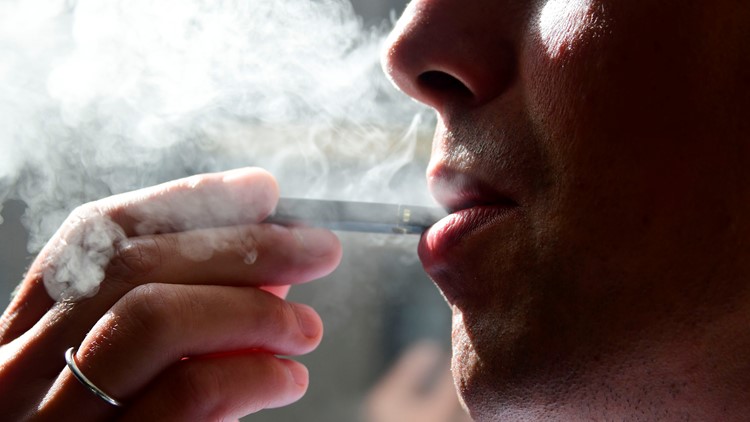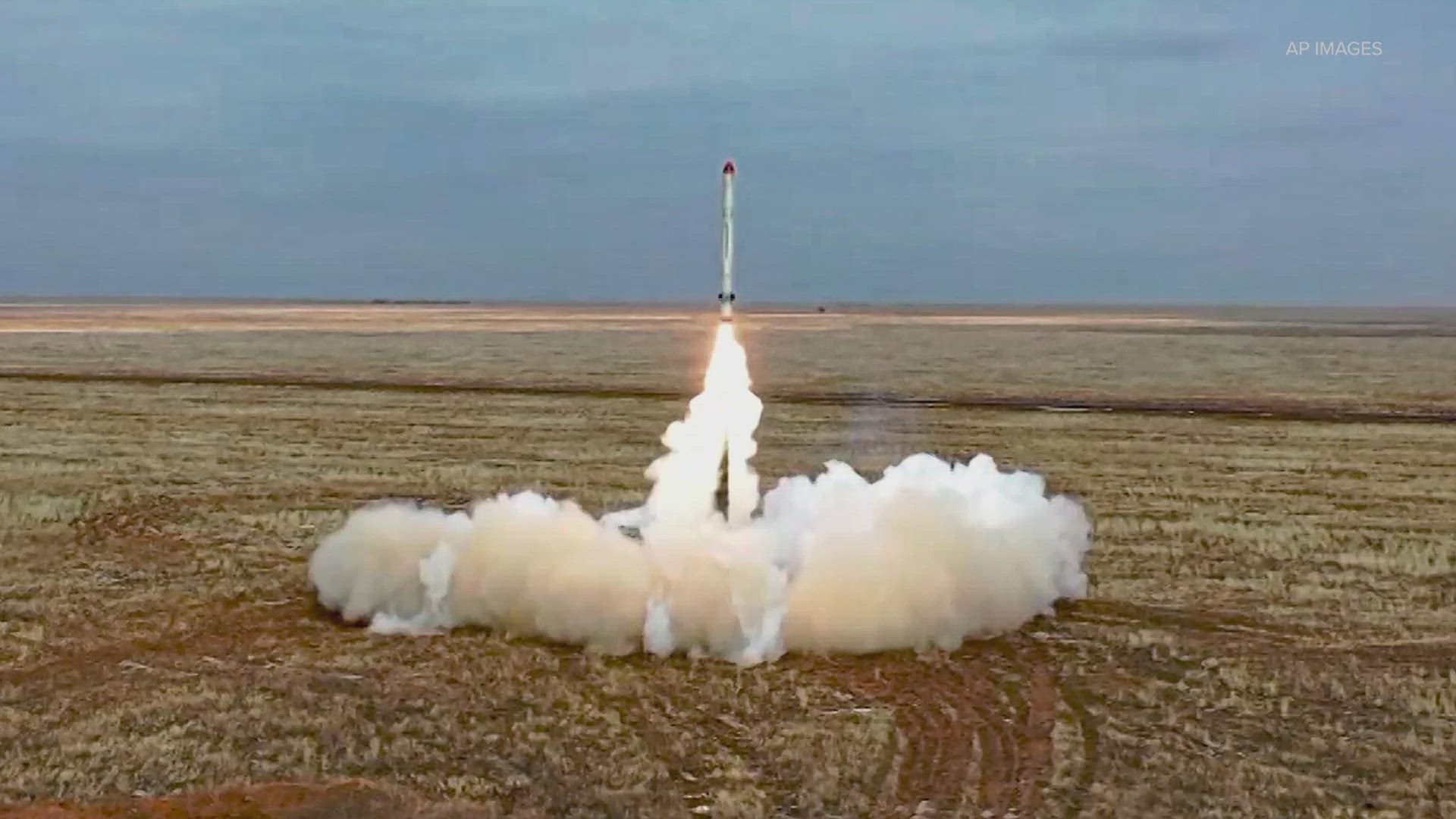The percentage of high school seniors who say they vaped nicotine in the past 30 days nearly doubled this year, a dramatic increase that federal officials want to curb with new rules and restrictions.
In the annual Monitoring the Future survey on drug use among adolescents, federally funded researchers reported Monday that more than one in three high school seniors and nearly one in three sophomores say they vaped at least once in the past year.
Nearly 21 percent of high school seniors say they vaped a nicotine product within the past 30 days, up from 11 percent a year ago – the largest one-year increase of any substance use in the survey's 43-year history.
The survey of 44,482 students from 392 public and private schools was funded by the National Institute of Drug Abuse and conducted by researchers at the University of Michigan.
Use of other illicit drugs among teens was flat or declined. Students are drinking less, with lower rates of binge drinking or being drunk. Misuse of prescription opioids also decreased.
Federal officials called the rise in vaping alarming. Officials and anti-smoking activists have called for more education about the potential harms of nicotine addiction and more oversight of the way the burgeoning e-cigarette industry markets e-cigarettes.
"Nicotine is quite an addictive drug, particularly when you are exposed to nicotine as an adolescent," NIDA Director Nora Volkow said. "The concern is these kids that become addicted to nicotine from vaping also may transition to tobacco smoking."
Food and Drug Administration Commissioner Scott Gottlieb has described teen vaping an "epidemic." The FDA last month announced proposals to curb underage vaping by restricting sales of sweet-flavored e-cigarette liquid.
E-cigarettes were developed to help adult smokers quit tobacco. But Robin Koval, CEO of the Truth Initiative, a nonprofit tobacco-control organization, said the industry is "largely unregulated, or loosely regulated," and doesn't do enough to curb underage use.
Two in three 10th graders told the Michigan researchers it was "fairly easy" or "very easy" to get a vaping device or nicotine-packed liquid pod.
"Kids have been able to get their hands on and use them in ways that are a lot easier to use than a combustible cigarette," Koval said.
"Once you are addicted to nicotine, you are addicted to nicotine. It’s very concerning to have made all this progress (against smoking) and to be sitting on a ticking time bomb of what kids are at risk for in the future."
Researchers found that cigarette smoking continued a years-long decline in 2018, reaching the lowest level in the survey's 43-year history. Fewer high school seniors used other tobacco products, including the once-popular hookah pipes, smokeless tobacco and tiny cigars.
Gregory Conley, president of the American Vaping Association, an advocacy group, said the belief that vaping teens will turn to cigarettes or other tobacco products is a "mythical gateway effect."
"Teenage cigarette smoking had stalled for several years prior to vaping coming to market, which was then followed by the record breaking declines in smoking once teens found different, less risky products to experiment with," he said.
While tobacco use declined, overall nicotine use including vaping increased, according to Richard Miech, a Michigan researcher. A total of 28.5 percent of seniors reported using one form of nicotine or another in the past 30 days.
“These results suggest that vaping is leading youth into nicotine use and nicotine addiction, not away from it,” Miech said.
While teens reported easy access to vaping devices, the same was not true of opioids. Only one in three seniors said prescription opioids were easy to get, down from 54 percent in 2010.
Fewer than 2 percent of seniors misused Vicodin, down from 10.5 percent 15 years ago.
The Centers for Disease Control and Prevention has recommended tighter controls on prescribing highly addictive opioids, and doctors are prescribing addictive painkillers less often. That could mean fewer teens have access to the pills in parents' medicine cabinets.
Marijuana use among 10th and 12th graders this year was comparable to 2017 levels, even as more states are allowing medical use and in some cases recreational use. Marijuana is the most common illicit drug among high school students – nearly one in four reported using the drug over the past 30 days.
"We have seen a significant increase in smoking marijuana in all ages – except teenagers," Volkow said.
Marijuana vaping among high school seniors increased to 13.1 percent this year, up from 9.5 percent in 2017.
Use of cocaine, synthetic marijuana and ecstasy were near historic lows, the researchers found.
Volkow said researchers don't know why teens are turning away from drugs, alcohol and opioids. One possible explanation, she said, is they're spending more time on devices, and less time in social settings where peer pressure reigns.
"We know drug taking among adolescents is a very social behavior," Volkow said. "Now that kids use more and more social media and have less time in face-to-face encounters, the question is do they have less of an opportunity to be in an environment where they are exposed to drugs?"



